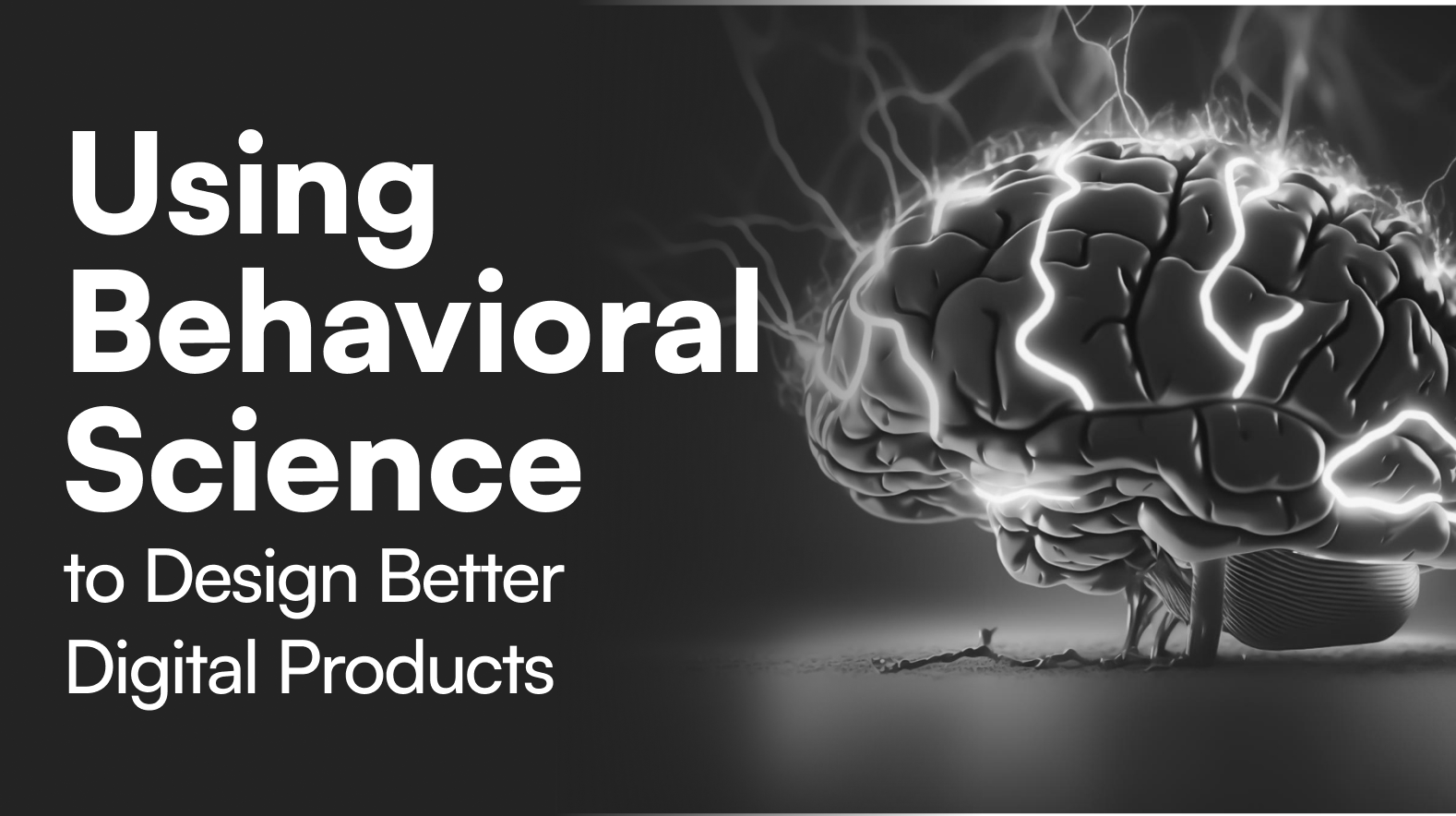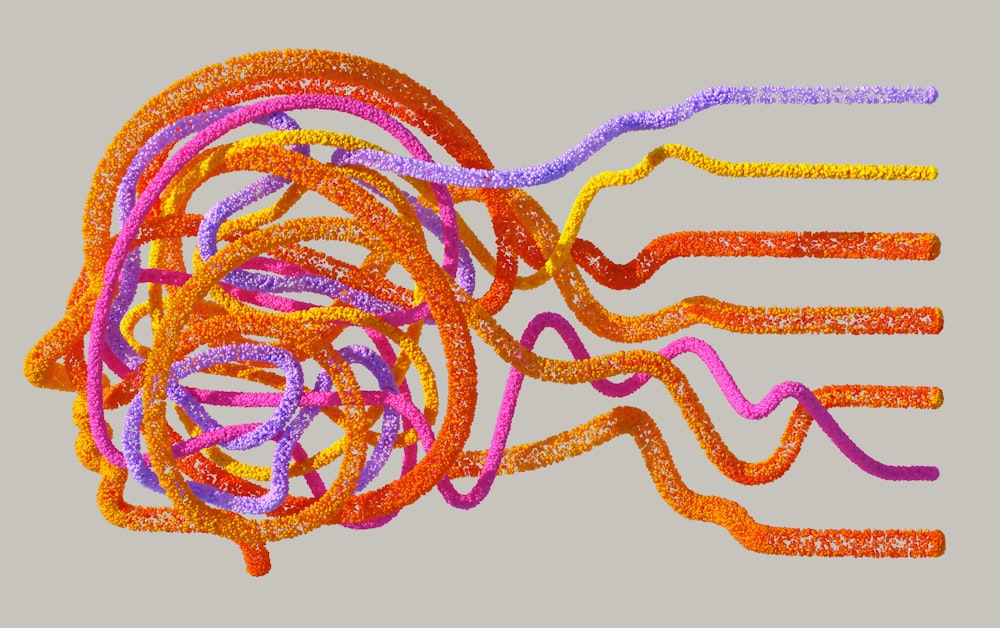Design Psychology
Using Behavioural Science to Design Better Digital Products

Technology has rapidly changed the way we live our lives, and digital products have become an integral part of our everyday existence. From smartphones to fitness apps, digital products are all around us, and they continue to evolve at an extraordinary pace. As designers, it is our responsibility to ensure that these products not only meet the needs of their users but also enhance their lives. That’s where using behavioural science to design comes in.
In this blog post, we’ll explore how we can use the principles of behavioural science to design better digital products that are more effective and engaging for users.
The Power of Behavioural Science in Designing Digital Products
Behavioural science has become an important tool in designing effective and engaging digital products. By understanding how people think and act, designers can create products that are more intuitive and aligned with user needs and preferences.
Behavioural science can inform important design decisions, such as the use of feedback, rewards, and social influence to motivate users. Other key principles include simplifying choices, creating a sense of urgency, and utilizing defaults.
By integrating behavioural science into digital product development, designers can create designs that are more effective and emotionally engaging. The future of digital product design is likely to rely even more heavily on the insights of behavioural science as digital products continue to evolve and become more sophisticated.
Understanding Behavioural Science’s Impact on User Behaviour
One of the key benefits of using behavioural science in designing digital products is that it helps designers understand how people are likely to interact with these products. By understanding user behaviour, designers can create digital products that are more intuitive and effective in achieving their goals.
For example, if a designer understands that users are more likely to click on a button that is brightly colored and stands out from the rest of the page, they can design their buttons accordingly. Similarly, if a designer knows that users tend to be overwhelmed by too many choices, they can simplify the choices presented to the user in their design.
Behavioural science also helps designers understand how users make decisions and process information. By designing digital products that align with the way users process information and make decisions, designers can create a more user-friendly experience that encourages engagement and fosters brand loyalty.
Key Takeaways:
> Behavioural science helps designers understand user behaviour and decision-making patterns.
> Designers can use this information to create more effective and user-centric digital products.
> By crafting designs that align with user needs and preferences, designers can create a more engaging and memorable experience.
Key Principles of Behavioural Design for Digital Products

When it comes to designing digital products, leveraging principles of behavioural science can lead to more effective and engaging designs. Here are some key principles of behavioural design that can be applied:
1. Feedback: Providing users with real-time feedback on their actions can encourage behaviour change and motivate continued use of the product.
2. Reward: Users are more likely to engage with digital products when they are rewarded for their actions, whether it be through points, badges, or other incentives.
3. Social influence: People are heavily influenced by the behaviour of others, so incorporating social cues and social proof into digital designs can help motivate users.
4. Defaults: By setting certain options as the default, users are more likely to stick with the default choice and avoid decision fatigue.
5. Simplifying choices: Too many choices can overwhelm users, so simplifying the decision-making process can make the user experience more enjoyable and less intimidating.
6. Creating a sense of urgency: By providing time-sensitive offers or making products available for a limited time, users may be more motivated to take action.
By incorporating these principles of behavioural design, designers can create digital products that are more intuitive and effective at engaging users. Ultimately, user engagement and satisfaction are the keys to a successful digital product.
Crafting User-Centric Designs through Behavioural Science

One of the key advantages of using behavioural science in designing digital products is the ability to craft user-centric designs. By understanding how people think and behave, designers can create products that are tailored to user needs and preferences.
One important aspect of crafting user-centric designs is usability. Behavioural science can help designers to understand how users are likely to interact with a digital product and to create a design that is intuitive and easy to use. This can promote user engagement and satisfaction, leading to higher levels of adoption and use.
Another aspect of user-centric design is personalization. Using principles of behavioural science, designers can create products that are personalized to individual needs and preferences. This can include features such as recommended content, personalized messaging, and user-specific settings. Personalized designs can lead to increased user satisfaction and loyalty.
Lastly, user-centric design should also take into account the emotional experience of using a digital product. Behavioural science can help designers to create emotionally engaging designs that resonate with users. This can involve using elements such as storytelling, gamification, and visual cues to create a more immersive and enjoyable user experience.
Incorporating behavioural science principles into the design process can lead to more effective and successful digital products that are truly user-centric.
Integrating Behavioural Science into Digital Product Development
Integrating behavioural science into digital product development can make the design process more effective and user-centric. By using behavioural science, designers can gain a deeper understanding of user needs and preferences, as well as decision-making patterns. This understanding can be used to create digital products that are more intuitive and engaging for users.
One way to integrate behavioural science into digital product development is to conduct user research. This can include surveys, interviews, and usability testing. Through this research, designers can gain insights into user behaviour and decision-making, and use this information to create more effective digital products.
Another way to integrate behavioural science is to use data analytics to track user behaviour. This can help identify patterns and trends in user behaviour, which can be used to inform design decisions. For example, if users consistently abandon a particular feature, designers can use that information to improve the feature or remove it entirely.
Overall, integrating behavioural science into digital product development can lead to more effective designs and a better user experience for customers.
Creating Emotionally Engaging Digital Products using Behavioural Science
Behavioural science can be used to create digital products that not only meet users’ functional needs but also evoke positive emotions. Positive emotions can lead to increased user engagement and sustained usage of the product.
Designers can use principles of behavioural science to create emotionally engaging digital products. For example, incorporating elements of surprise, such as unexpected rewards or easter eggs, can create an emotional response that reinforces positive behaviours. Using persuasive language that appeals to users’ emotions, such as creating a sense of urgency or tapping into social identity, can also increase user engagement.
Incorporating personalization into digital products can also create emotional connections with users. Personalization can range from simple customizations, such as allowing users to choose a theme or avatar, to more complex personalization that adapts the product to users’ unique interests and preferences.
Ultimately, creating emotionally engaging digital products requires a deep understanding of user needs, preferences, and behaviours. By incorporating principles of behavioural science into the design process, designers can create products that not only meet users’ functional needs but also evoke positive emotions, leading to increased user engagement and sustained usage of the product.
Measuring the Effectiveness of Behavioural Science-Infused Digital Designs

Measuring the effectiveness of digital designs that incorporate behavioural science principles is crucial for fine-tuning designs and improving user engagement. There are several metrics that can be used to evaluate the success of these designs:
a. Conversion rates: Tracking conversion rates can indicate how effective a design is at getting users to take a desired action, such as making a purchase or signing up for a service.
b. User engagement: Measuring user engagement can show how often users are interacting with a digital product and how long they are spending on it.
c. Satisfaction: Evaluating user satisfaction through surveys or user feedback can provide insights into how well a design is meeting user needs and expectations.
By using these metrics and others, designers can identify strengths and weaknesses in their designs and make data-driven decisions on how to improve them.
Remember, effective designs are not just visually appealing, but they also need to be user-centric and aligned with user needs and behaviours. Measuring effectiveness and continuously improving can lead to more engaging and successful digital products.
Future of Digital Product Design with Behavioural Science
Behavioural science is becoming increasingly important in the design of digital products, and this trend is likely to continue in the future. As technology continues to evolve, digital products will need to become more intuitive, effective, and engaging in order to remain competitive.
By using principles of behavioural science, designers can create products that respond to the way people think and act. This means that digital products will become more user-centric, and will be better aligned with user needs and preferences.
In the future, behavioural science will play an even greater role in the design of digital products, as designers begin to incorporate new research and insights into their work. By staying up-to-date with the latest trends and best practices, designers will be able to create products that are more effective, engaging, and memorable.
Overall, the future of digital product design with behavioural science is bright, and we can expect to see exciting developments in the years to come.
Conclusion
Using behavioural science in the design of digital products is an exciting and emerging field that has the potential to transform the way we interact with technology.
By understanding user behaviour and designing products that are user-centric, designers can create digital products that are more effective, engaging, and emotionally resonant. In the future, we can expect behavioural science to play an even greater role in the development of new digital products. Ultimately, the goal is to design digital products that help people in meaningful ways, and the insights from behavioural science can help us achieve that aim.
Read more similar to using behavioural science to design:
Learn to build empathy and install an inclusive design mentality. Here are accessibility guidelines for User Experience designers.
Dark UX has various dark patterns through which it stealthily functions. Learn 12 patterns to recognize the Dark UX. Subscribe to learn more!
Learn in detail about the importance of user-centered design for creating better user experiences and improved business outcomes!





